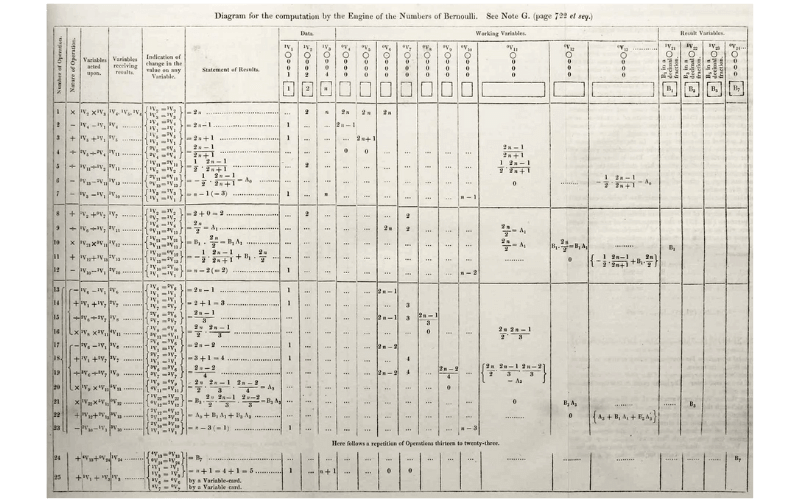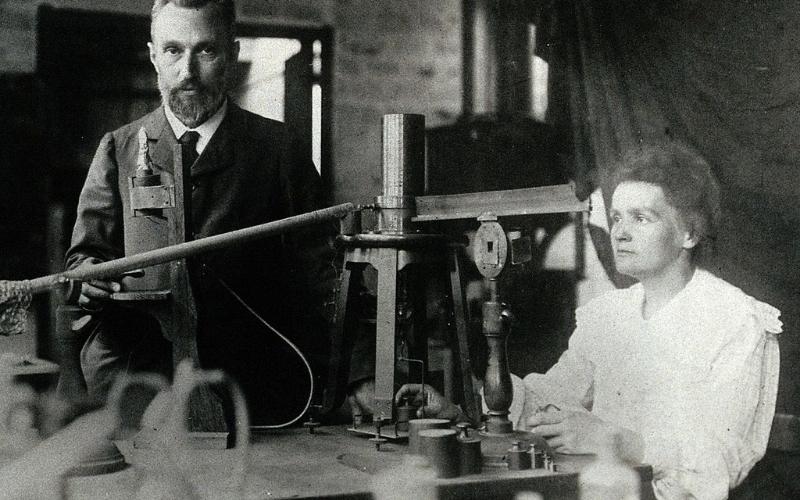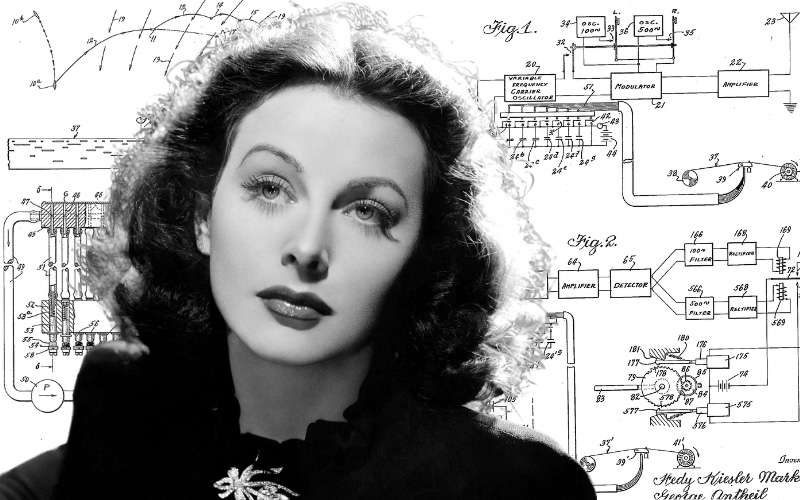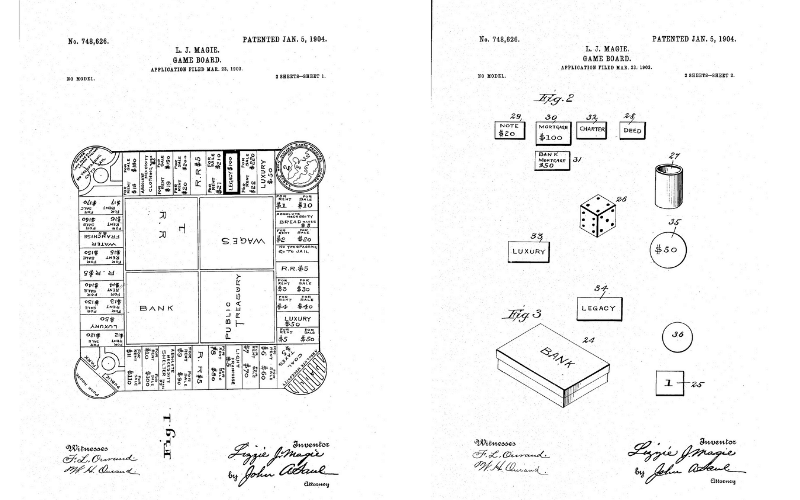
Monumental innovations and inventions made by women
The societies of days gone by often did not expect women to contribute to the fields of science, technology or business — but many did just that, and in some exceptional ways.
Here, we will discuss just a few of the most notable discoveries and inventions made by women in recent centuries. Some were practical solutions with eventual everyday impact, while others were truly earth-shaking technological advancements that would not have been possible without the hard work, ingenuity and, sometimes, sacrifices of their creators.
A version of this story originally ran on March 24, 2020; it has been updated for accuracy and completeness.
Ada Lovelace and the invention of computer code
Ada Lovelace is often called "the world's first computer programmer" for writing the earliest algorithm for a theoretical computer — back in the 1840s. It all started with an article by Italian mathematician Luigi Menabrea that Charles Babbage, inventor of the "analytical engine" and a close friend of Lovelace, asked her to translate. She did considerably more than that, annotating it with a complexity and ambition that overshadowed Menabrea's original. Her writings are presented as "notes upon the Memoir by the Translator, Ada Augusta, Countess of Lovelace."
Lovelace hypothesized that the theoretical machine could process letters and symbols as well as numbers, establishing a concept that is the foundation of today's algorithms that lie at the heart of modern computer science. She outlined several prototypical computer programs in the paper and devised the idea of looping – a repeating series of instructions – still used in computer languages to this day.

Babbage had immense respect for Lovelace, as did other male scientists, including electricity pioneer Michael Faraday. Yet, for all this high regard in academic circles, her ideas did not get widespread attention until a century after her untimely death of uterine cancer at 36. In 1953, B.V. Bowden republished her paper in his book Faster Than Thought: A Symposium on Digital Computing Machines.
Just one year before the publication of Bowden's book, however, another woman made a discovery in the spirit of Lovelace: Dr. Grace Murray Hopper, a lieutenant in the United States Navy Reserve. She was the inventor of the compiler, a program that could translate English-language instructions into computer source code. Later in the 1950s, she helped develop COBOL, a computer programming language still used in the modern data processing.
Marie Curie's radioactivity studies
Marie Curie's daily work often left her feeling sick and exhausted — despite being a relatively young woman when she started her pioneering work in physics. Her hands were often raw and inflamed from handling radioactive elements.
In 1898, Marie and her husband Pierre announced their discovery of an element called "polonium." In 1902, they described another radioactive element: radium. The following year, Marie Curie became the first woman to win a Nobel Prize. She shared the award for physics with her husband Pierre and another physicist named Henri Becquerel, who had done similar research at the turn of the 20th century. These findings eventually contributed to the discoveries of nuclear fission and fusion.

Pierre died in 1906 in a street accident, but Marie Curie did not let tragedy slow her down. She went on to develop a process for measuring radioactivity, an achievement that helped her become the first person to win two Nobel Prizes. This second medal was in chemistry, making her the only person other than American chemist Linus Pauling to win in two separate fields.
During the First World War, Marie Curie championed the development of mobile X-ray machines, forever changing medicine as we know it, all while lecturing on her findings across the world. Sadly, her years of working with radioactive elements inevitably took their toll: In 1934, she died from aplastic anemia, an illness linked to radiation exposure.
Hedy Lamarr: Hollywood icon turned inventor
Studio executive Louis B. Mayer referred to Hedy Lamarr as "the most beautiful woman in the world" when she became an MGM contract actress in 1938. She was also likely one of the smartest at that time and should be recognized as a massively influential female inventor.
Lamarr's career began in German film and theater. She inevitably attracted Hollywood's attention and eventually starred opposite icons, including Spencer Tracy, Clark Gable and Jimmy Stewart. But instead of partying as movie stars are wont to do, Lamarr would go home from sets and devise inventions: everything from stoplights to soda tablets.

As the Second World War raged, Lamarr decided to contribute actively to the Allied campaign. In 1942, she joined composer George Antheil in inventing and patenting their "Secret Communication System," a code for guiding torpedoes. Its radio frequencies changed at various intervals and thus, in theory, could not be intercepted by enemies.
The United States Navy was skeptical of Lamarr and Antheil's invention, sitting on it until the 1960s. After that, technologies directly or indirectly based on Lamarr's idea of "frequency-hopping" began permeating various industries. Many such technologies are still used today, in everything from secure military communications to consumer Wi-Fi.
The bulletproof Stephanie Kwolek
The next time you watch an action film and see one of the police or thieves gunned down, only to open their shirt and reveal a bulletproof vest, you can thank Stephanie Kwolek for inventing Kevlar.

Kwolek made her discovery in 1965 while working at DuPont, tasked with creating the next generation of super-durable fibers. She worked on synthesizing polyamides, dissolving them in solvents and then spinning them into a thread. During one of these experiments, she discovered that polyamide molecules lined up in parallel under certain conditions. The resulting solution could then be spun into a durable, lightweight fabric. Today, Kwolek's invention is used in spacecraft, tires, sporting equipment and, of course, bulletproof vests.
Dr. Shirley Jackson: Breaking ground in theoretical physics
When Shirley Jackson started her undergraduate studies at the Massachusetts Institute of Technology (MIT) in 1964, she was one of the very few black students, facing tacit and direct racism. In the decades that followed, she became MIT's first black Ph.D., worked in the theoretical physics department at Bell Labs, served on the presidential cabinets of Bill Clinton and Barack Obama, became president of the prestigious Rensselaer Polytechnic Institute and earned the National Medal of Science. That should tell you something about her tenacity and ability.
Dr. Shirley Jackson's career is not defined by any single invention but by the innovations her research has enabled, encompassing solid-state, theoretical, optical, nuclear and quantum physics. Her work at Bell Labs, primarily focused on semiconductor systems and charge density waves, helped spur the development of high-temperature superconductors, which are essential to current quantum computing efforts. As head of the United States Nuclear Regulatory Commission during the Clinton administration, she devised critical nuclear safety regulations. On top of all these achievements, the advancements in biotechnology, nanotechnology, medical devices and more made during her tenure as president of Rensselaer could easily be the subject of their own article. Jackson is a trailblazer in women's history and a strong role model for young women interested in entering scientific disciplines.
Some more unsung patent heroines
Elizabeth Magie: Monopoly's original patent holder
Elizabeth Magie's creation of the board game Monopoly is the story of a remarkable American woman well ahead of her time and a lesson in how once-patented Intellectual Property (IP) can be radically transformed.
Magie, an outspoken feminist and progressive economic thinker, created The Landlord's Game in 1904 and patented it as such. It was intended as a criticism of unchecked capitalism and monopolist land acquisition. The original game could be played in two ways by using either the acquisition-at-all-costs set of rules we know from modern Monopoly or a more egalitarian approach, where wealth-creation allowed for individual and collective prosperity. As you might expect, its main appeal was with academics who shared Magie's political beliefs.

About 25 years later, a Pennsylvanian salesman named Charles Darrow came across the game. He modified various elements of its design and visuals and removed Magie's alternative "non-monopolist" rules, selling it to Parker Brothers as his own creation. The company knew about the original Landlord's Game and, to avoid competition, bought Magie's (second) Monopoly patent for $500 in 1935.
Darrow got a patent for his version and earned millions of dollars in royalties. Magie made nothing, and her role in Monopoly only became widely known through journalist Mary Pilon's 2015 book The Monopolists. Who would have thought a board game could become a self-fulfilling commentary on itself.
Amalie Melitta Bentz: A coffee pioneer
If you made yourself a coffee this morning, there is a good chance you used a drip machine and paper filter. Millions of joe drinkers worldwide owe a great debt of gratitude to Amalie Melitta Bentz, inventor of the coffee filter.

In 1908, Bentz was dissatisfied with her coffee, finding it too bitter and saturated with grounds. She experimented with blotting paper and a brass cup with holes punched in its bottom. The liquid passed through the cup when lined with the paper but the coffee grounds did not. Right away, she started a company to mass-produce the filters, naming it Melitta. That business still exists today, employing more than 5,800 people worldwide.
The world changed by women
This list is hardly complete, so let us take an additional moment to thank all the other women inventors for their marvels. Like the ladies described above, their work was not always respected in its time, but today, women innovating and inventing is a regular occurrence. At Dennemeyer, we are more than ready to help women — and everyone else — secure their patent rights.
Filed in

Take a closer look at some of the top pharmaceutical trends and how IP is driving and being driven by these changes.



